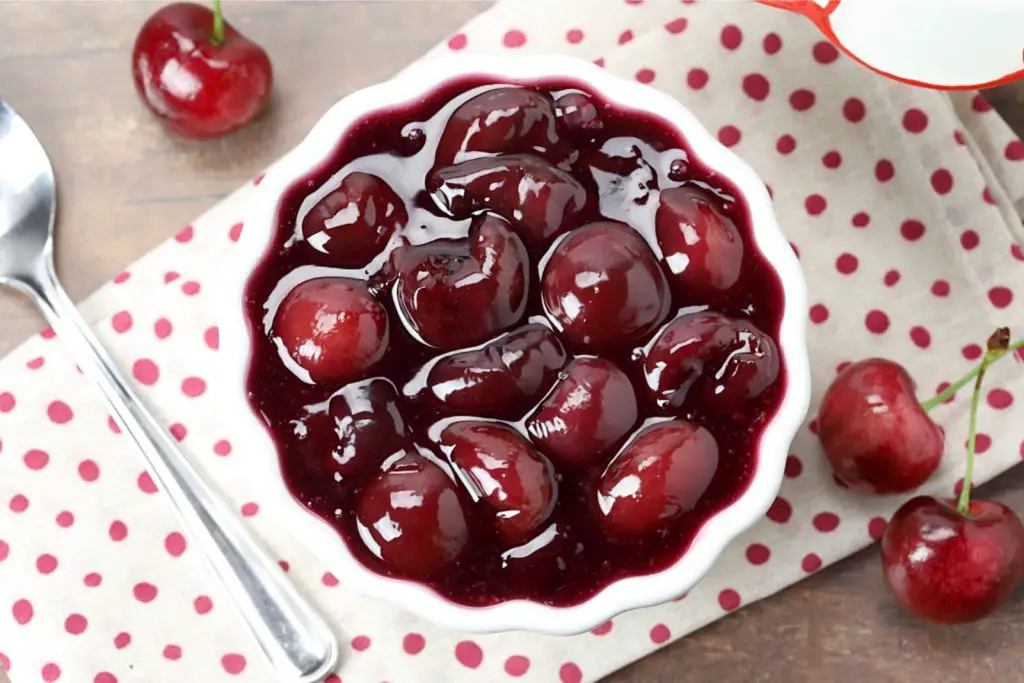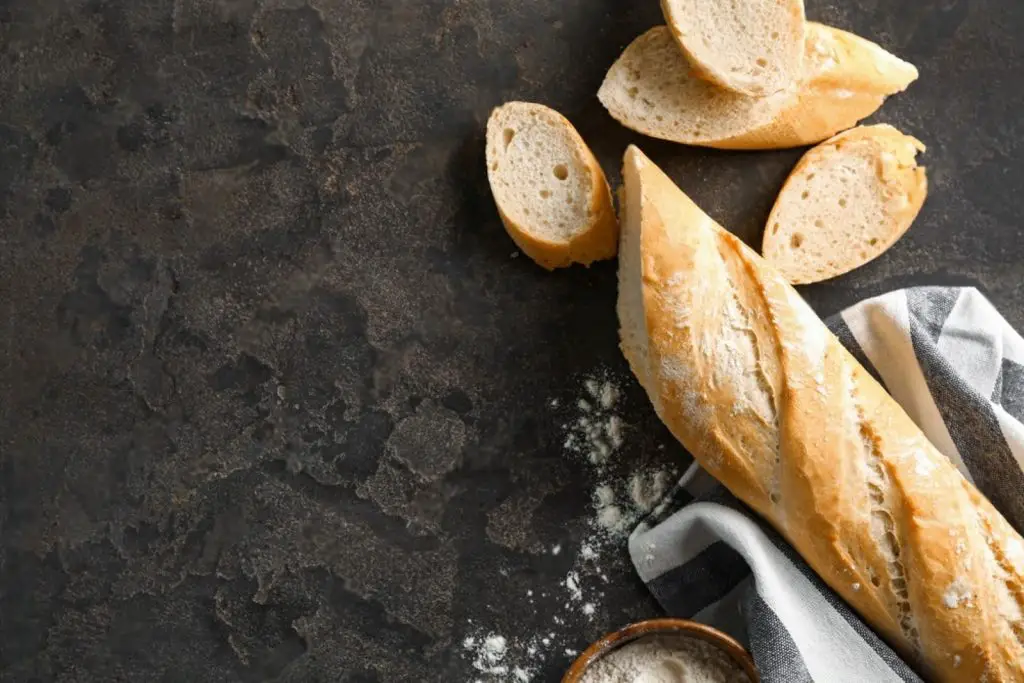
Blueberry muffins, with their delightful bursts of sweet and tangy flavors, are a beloved baked good enjoyed by people of all ages. Whether you bake them from scratch or purchase them from a bakery, knowing how to properly freeze blueberry muffins is a valuable skill that allows you to enjoy their freshness for an extended period. By following the right techniques, you can preserve the moistness, taste, and aroma of these delectable treats, ensuring that a batch of perfectly frozen blueberry muffins is always within reach when you crave a delicious snack or a quick breakfast on busy mornings.
Here are the simple steps to freeze blueberry muffins:
Step 1: Allow the Muffins to Cool
When it comes to freezing blueberry muffins, it’s essential to let them cool down completely before proceeding. This step might seem simple, but it plays a crucial role in preserving the texture and taste of your muffins.
After baking, the residual heat in the muffins can create steam, which, if trapped, can result in excess moisture and ultimately make the muffins soggy when thawed. Allowing the muffins to cool on a wire rack for about an hour is generally sufficient to prevent this from happening.
By placing the muffins on a wire rack, air can circulate around them, facilitating the cooling process. This helps to dissipate any remaining heat and ensures that the muffins reach room temperature evenly. Cooling the muffins completely is a matter of patience and discipline, but it greatly contributes to the success of freezing them.
Additionally, cooling the muffins before freezing them minimizes the risk of condensation forming inside the storage container. If you were to pack warm muffins into a container, the warm air trapped inside would come into contact with the cold air in the freezer, resulting in condensation. This condensation can lead to ice crystals forming on the muffins, compromising their texture and taste.
Be patient and give your blueberry muffins ample time to cool down completely before freezing. This step ensures that excess moisture and condensation are minimized, allowing you to enjoy perfectly preserved muffins when you’re ready to indulge in their delightful flavors.
Step 2: Wrap Each Individually
After the blueberry muffins have cooled down completely, it’s important to take the extra step of wrapping each muffin individually before freezing. This may seem like a meticulous task, but it serves a crucial purpose in preserving the quality of the muffins during their time in the freezer.
Individually wrapping each muffin provides a protective layer that helps prevent freezer burn. Freezer burn occurs when food is exposed to air in the freezer, causing dehydration and the formation of ice crystals on the surface. These ice crystals can result in a dry and unpleasant texture, compromising the taste and overall enjoyment of the muffins.
To wrap the muffins, you can use either plastic wrap or aluminum foil. Both options work well in creating a barrier against air and moisture. Make sure to tightly wrap each muffin, covering it completely from top to bottom. This ensures that the muffins are well-sealed and protected.
By wrapping each muffin individually, you also prevent any unwanted odors from seeping in. In the freezer, various food items can release odors, and muffins are no exception. The individual wrapping acts as a shield, preventing the muffins from absorbing any unwanted flavors or aromas from other frozen foods nearby.
Taking the time to wrap each blueberry muffin individually before freezing is a crucial step to ensure its quality and flavor are preserved. This extra layer of protection guards against freezer burn prevents odors from affecting the muffins’ taste and helps maintain their moisture, resulting in a delightful treat when you’re ready to enjoy them.
Step 3: Place in a Container or Bag
Once you have individually wrapped each blueberry muffin, the next step is to store them in a suitable freezer-safe container or bag. This is an important step to protect the muffins from moisture, air exposure, and potential freezer burn.
When selecting a container, ensure that it is specifically designed for freezer storage and is airtight. This prevents any air from entering the container and affecting the muffins’ texture and taste. Glass or plastic containers with secure lids are excellent options for storing muffins in the freezer.
Alternatively, you can use heavy-duty freezer bags designed for long-term food storage. These bags are made from thicker, more durable materials that can withstand freezing temperatures. Opt for high-quality bags that have a reliable seal to prevent air and moisture from getting in.
Regardless of the container or bag you choose, it’s crucial to remove any excess air from the packaging before sealing it. Excess air can lead to freezer burn and affect the muffins’ quality. Press out as much air as possible from the bag or container before sealing it tightly.
Storing the individually wrapped blueberry muffins in a suitable freezer-safe container or bag is essential to maintain their freshness and protect them from freezer burn. Choose an airtight container or bag, and remove excess air properly to ensure optimal results when you’re ready to enjoy your frozen muffins.
Step 4: Label and Date
When freezing blueberry muffins, it’s important to label the container or bag to keep track of their freezing time. This simple step helps you stay organized and ensures that you consume the muffins before their quality starts to decline.
To label the container or bag, take a moment to write down the current date. You can use a piece of tape and a marker to write the date and then stick it onto the packaging. Alternatively, you can directly write the date on the container or bag using a marker or a label.
By labeling the container or bag with the date of freezing, you create a reference point for the muffins’ storage time. This allows you to know how long they have been in the freezer and helps you determine their freshness and quality when you decide to enjoy them later.
Keeping track of the freezing time is crucial because even though frozen muffins can maintain their safety and edibility for an extended period, their quality may start to decline over time. While they won’t become unsafe to eat, flavors and textures can change after several months in the freezer.
Having the date labeled on the packaging allows you to prioritize the consumption of the muffins. You can plan accordingly and ensure that you enjoy the muffins within a reasonable timeframe when they are still at their best quality.
Taking a moment to label and date the container or bag is a simple yet crucial step when freezing blueberry muffins. It helps you keep track of their storage time, prioritize consumption, and avoid confusion in your freezer. By doing so, you can ensure that you savor the muffins at their peak quality and enjoy them to the fullest.
Step 5: Place in the Freezer
After you have wrapped, sealed, and labeled your blueberry muffins, it’s time to put them in the freezer for long-term storage. This step is crucial in preserving the muffins’ quality and ensuring they stay fresh until you’re ready to enjoy them.
Firstly, find a suitable spot in your freezer where the muffins can lay flat without being crushed or squished by other items. It’s important to handle the muffins with care to maintain their shape and texture. If possible, place them in a single layer to prevent them from sticking together.
By laying the muffins flat, you provide an even surface area for them to freeze. This allows for more consistent freezing and helps to maintain the muffins’ shape and texture. It also makes removing individual muffins from the freezer easier without disturbing the others.
Ensure that you provide sufficient space between each muffin to allow for even freezing. This prevents the muffins from sticking together and allows air to circulate around them. Proper air circulation helps to preserve the muffins’ quality and prevents the formation of ice crystals.
If you have limited space in your freezer, you can stack the muffins on top of each other once they are partially frozen. However, make sure to place a sheet of parchment paper or plastic wrap between the layers to prevent them from sticking together.
Placing the wrapped and labeled blueberry muffins in a suitable spot in the freezer is a crucial step for long-term storage. By laying them flat, providing space between each muffin, and ensuring proper air circulation, you can preserve their quality and easily retrieve them when desired. Following these guidelines will ensure that you have a batch of delicious frozen blueberry muffins ready to enjoy whenever you crave them.
How long can blueberry muffins last in the freezer?
Blueberry muffins can last in the freezer for approximately 2 to 3 months while maintaining good quality. Properly stored muffins can remain safe to eat for longer periods, but their texture and flavor may begin to deteriorate after a few months. It’s important to label the container or bag with the freezing date to keep track of their storage time and prioritize consumption accordingly.
Step 6: Thaw and Reheat
When the time comes to enjoy your frozen blueberry muffins, there are a couple of methods you can use to thaw and reheat them. Whether you prefer a slow thawing process or a quick defrost, these steps will help you bring the muffins back to their warm and delicious state.
Slow thawing in the refrigerator:
The first method involves transferring the desired number of muffins from the freezer to the refrigerator the night before you plan to enjoy them. Place the wrapped muffins in a covered container or on a plate to prevent any potential condensation from affecting their texture. This slow thawing process in the refrigerator allows the muffins to gradually thaw while retaining their moisture. By thawing in the refrigerator, you can ensure that the muffins thaw evenly and maintain their freshness.
Quick defrosting in the microwave:
If you’re short on time or simply prefer a quicker method, you can use the microwave to defrost individual muffins. Start by removing the plastic wrap or aluminum foil from the muffin and place it on a microwave-safe plate. Set the microwave to a low power setting, such as 30% or defrost mode, to gently thaw the muffin without overheating it. Microwave for short intervals, checking the muffin’s progress after each interval to prevent overheating. It’s important to note that microwaving can result in a slightly softer texture compared to the slow thawing method.
Once the muffins are thawed, you can enhance their taste and texture by reheating them in the oven. Preheat the oven to a temperature of around 325°F (163°C). Place the thawed muffins on a baking sheet or in a muffin tin and bake them for a few minutes until they are warmed through. This step helps restore that fresh-out-of-the-oven taste, with a slightly crisp exterior and a warm, tender interior.
Remember to keep a close eye on the muffins while reheating to avoid overcooking them. The exact reheating time will vary depending on the size and thickness of the muffins, so it’s best to check them frequently until they reach your desired level of warmth.
Other related questions
Can you refreeze blueberry muffins?
It is generally not recommended to refreeze blueberry muffins once they have been thawed. Refreezing can lead to a decline in quality, affecting their taste and texture. The repeated freezing and thawing process can cause moisture loss and affect the overall freshness of the muffins. It is best to consume the muffins after the initial thawing and avoid refreezing them.
How do I know if the blueberry muffins have gone bad after being frozen?
To determine if blueberry muffins have gone bad after being frozen, there are a few signs to look out for. Firstly, inspect the muffins for any visible mold growth, unusual discoloration, or off-putting odors. If the muffins appear discolored, have a strange smell, or exhibit a fuzzy or slimy texture, it is a strong indication that they have spoiled and should not be consumed. Additionally, a significant change in taste or texture, such as a dry or stale consistency, can also indicate that the muffins have gone bad.
Can you freeze homemade blueberry muffins?
Yes, homemade blueberry muffins can be frozen to extend their shelf life. It is important to allow the muffins to cool completely before freezing them. Wrap each muffin individually in plastic wrap or aluminum foil, and then place them in a freezer-safe container or bag to protect them from freezer burn. Properly stored, homemade blueberry muffins can be frozen and enjoyed at a later time.
Are there any tips for preventing freezer burn on frozen blueberry muffins?
To prevent freezer burn on frozen blueberry muffins, it is important to properly store them. Ensure the muffins are wrapped tightly in plastic wrap or aluminum foil to create a protective barrier against air and moisture. Placing the individually wrapped muffins in airtight containers or freezer bags can provide an extra layer of protection. Additionally, labeling the containers with the freezing date and consuming the muffins within the recommended storage time can help maintain their quality and prevent freezer burn.
Can I freeze blueberry muffins with cream cheese?
Yes, you can freeze blueberry muffins with cream cheese, but it may affect the texture and consistency of the cream cheese. Freezing can cause the cream cheese to become slightly grainy or separated upon thawing. It is advisable to wrap the muffins tightly and store them in an airtight container to minimize the risk of freezer burn and maintain their overall quality.
What are other methods for freezing blueberry muffins?
Aside from the traditional methods of wrapping and storing blueberry muffins individually in the freezer, there are a few alternative techniques. One option is to flash freeze the muffins before transferring them to a container, which involves placing the unwrapped muffins on a baking sheet in the freezer until partially frozen and then storing them together. Another method is vacuum sealing the muffins, which helps remove excess air and provides a more airtight seal to maintain their freshness. Both methods can be effective in preserving the quality of frozen blueberry muffins.








